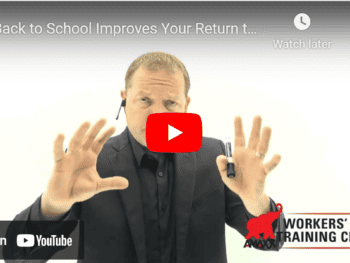
21st Century Job Descriptions Using Artificial Intelligence
Automated, detailed functional job descriptions are possible through artificial intelligence and other advanced technologies. Unlike the simplistic, hand-written, one-page job descriptions seen in many organizations, these allow the user to quickly determine which jobs might have the highest risks and the degree to which they can be made safer through various ergonomic and other changes.
Among the more prominent organizations having success with this approach is MyAbilities. The company provided the following example to demonstrate the value of a highly sophisticated functional job description.
The job at hand was that of a landscaper. The question was whether a certain worker – we’ll call him Joe – was capable of performing the tasks and, if necessary, whether changes could improve his ability to do the job.
A database of job descriptions was accessed to determine the basic physical requirements, with several additional tasks to determine their job demands. Transporting mulch, trimming hedges and raking yard debris were added to the description.
Two job profiles were produced;
- One included ergonomic modifications for each added task
- One with no ergonomic enhancements
The task of trimming hedges was viewed in one profile using hand-held trimmers and the other using a hedge trimmer on a telescoping handle. Transporting mulch was profiled with the worker carrying the mulch vs. using a push cart. A yard waste vacuum was one way to rake yard debris, while a hand-held rake was also considered.
Comparing the two job profiles showed several differences, such as:
- Gripping – 6 hours per shift, vs. less than 5 when ergonomic modifications were used
- Lifting – 3 hours rather than under 2 hours
Employee Joe was videotaped doing each of the three tasks with and without the ergonomic modifications. The videos were run through an analytic tool to produce a report that outlined the range of motion used for each job, along with an overall physical demand score for each.
The report clearly showed that when done with the ergonomic modifications, Joe spent much less time with his hands above his shoulders – greatly reducing his risk of injury. Also, his upper arms were in a neutral posture far longer in the ‘good’ ergonomics situation than without the modifications, and he was not reaching as far.
Ergonomic Modifications Significantly Decrease Demands of Job
Using the ergonomic modifications reduced the amount of carrying Joe had to do and replaced it with pushing; lessened the amount of handling of mulch and clippers; reduced the grip force by using the telescoping hedge trimmer; and cut down on the reaching distance by using the debris vacuum instead of a rake. The result was a significant decrease in the demands of the job.
The report that was generated included specific details about the effects on different body parts. Overall there was a greatly reduced impact on Joe’s arms and shoulders when the ergonomic modifications were employed.
This high-level approach to evaluating job tasks and matching them to an employee’s abilities is extremely effective when hiring and returning an injured employee to work. If Joe were returning from a work injury and had sustained an elbow injury, for example, he would be capable of performing the job – if the ergonomic modifications were in place.
Conclusion
Preventing injuries is the one surefire way to reduce workers’ compensation costs. While you may not be able to prevent every workplace injury, using tools based on advanced technologies can dramatically reduce them among new hires and prevent reinjuries from those returning after an injury.

Contact: mstack@reduceyourworkerscomp.com.
Workers’ Comp Roundup Blog: https://blog.reduceyourworkerscomp.com/
©2019 Amaxx LLC. All rights reserved under International Copyright Law.
Do not use this information without independent verification. All state laws vary. You should consult with your insurance broker, attorney, or qualified professional.

















